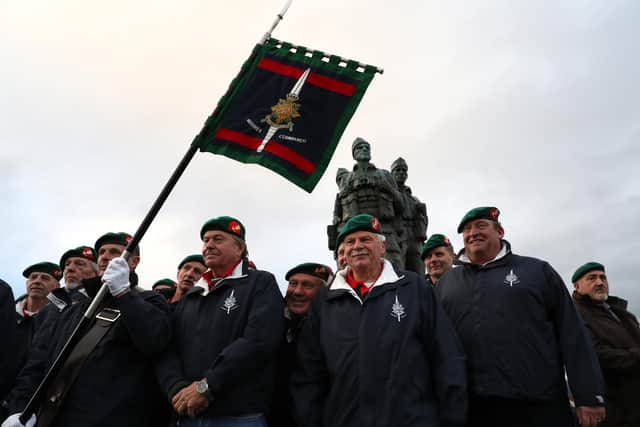When is Remembrance Day 2022: When is Remembrance Sunday and why do we wear poppies? Date of Armistice Day
This article contains affiliate links. We may earn a small commission on items purchased through this article, but that does not affect our editorial judgement.
Remembrance Day marks a time of national reflection as we remember the brave people who sacrificed everything in the First World War. The Royal British Legion charity refers to it as “a national opportunity to remember the service and sacrifice of all those that have defended our freedoms and protected our way of life.”
We mark this day with a one or two-minute silence which falls at 11am, this is because at this time on November 11, 1918, World War One came to an end as a peace agreement was finally signed seeing the bloodshed ceased but not before millions of lives were lost.
Advertisement
Hide AdAdvertisement
Hide AdThis means the hostilities ended on the 11th hour of the 11th day of the 11th month.


When is Remembrance Day 2022?
Remembrance Sunday always takes place on the second weekend of November, this means that the 2022 memorial will fall on Sunday, 13 November. This occurs along with the annual November 11 commemorations that mark the anniversary of the signing of Armistice that marked the end of World War One in 1918.
Armistice Day is marked by all Commonwealth nations but many other countries also recognise the date as a day of memorial.
When was Remembrance Day first celebrated?


Remembrance Day was first recognised in 1919 all across the British Commonwealth, at this time it was called ‘Armistice Day’ in commemoration of the armistice agreement that ended the war.
Officially, the first celebrations on this date were held by King George V at Buckingham Palace in 1919 where he hosted the president of France at the time, Raymond Poincaré.
Why do we wear a poppy on Remembrance Day?
The poppy is the universal symbol of Armistice Day and Remembrance Sunday - it is a flower with bright red petals and a black pistil that is worn to commemorate the military personnel who died at war. The British Legion charity says that it is a “symbol of both Remembrance and hope for a peaceful future,” and its significance runs very deep when we remember the history of World War One.
By the end of the war, massive regions of France and Belgium, which acted as war zones for the conflict, had been devastated and reduced to wastelands - whole villages were blasted out of existence following a catastrophic number of deaths.
However, amongst the bleak devastation bloomed a symbol of hope. In Flanders, a region of Belgium that witnessed some of the worst brutality, bright red poppies emerged from the upturned grounds - this powerful image would serve as a reminder that despite such a catastrophic loss, life indeed could still go on.
Advertisement
Hide AdAdvertisement
Hide AdTo spread the poppy as a symbol of remembrance, in 1921 the Royal British Legion bought nine million poppies and sold them on Remembrance Day, this raised £106,000 which was invested towards veteran care. Since starting this fundraising the Royal British Legion has since raised over £100 million from their poppy appeals.
Which side to wear a poppy on?
The British Legion reports that there “is no right or wrong way to wear a poppy. Wearing one is a matter of personal choice, as is, how to wear it.”
However, others say that you should wear it on your left breast for the symbolic value of it, therefore, being closer to your heart.
Where is the Remembrance Sunday event held in Scotland?
According to the Legion Scotland charity, Remembrance Sunday will be marked at the Stone of Remembrance, City Chambers, in Edinburgh on November 13, 2022, at 11am.
Veterans will assemble at Edinburgh Castle Esplanade at 10am and the parade will take place at 10:32am as the Veterans Detachment is led by the Royal Air Force Central Scotland Pipes and Drums, followed by Service detachments from the Royal Navy, Army and Royal Air Force led by The Band of the Royal Regiment of Scotland.
How many people died in World War One?
World War 1 saw an unprecedented number of deaths and, according to Britannica, this “immensely large number of deaths dwarfed that of any previous war, largely because of the new technologies and styles of warfare used…”
Estimates vary but the Robert Schuman Centre for Advanced Studies reports that the total number of military and civilian casualties was around 40 million; with 20 million deaths and 21 million injured.
Comments
Want to join the conversation? Please or to comment on this article.
